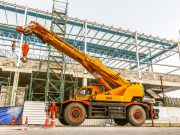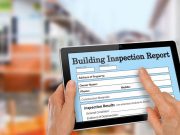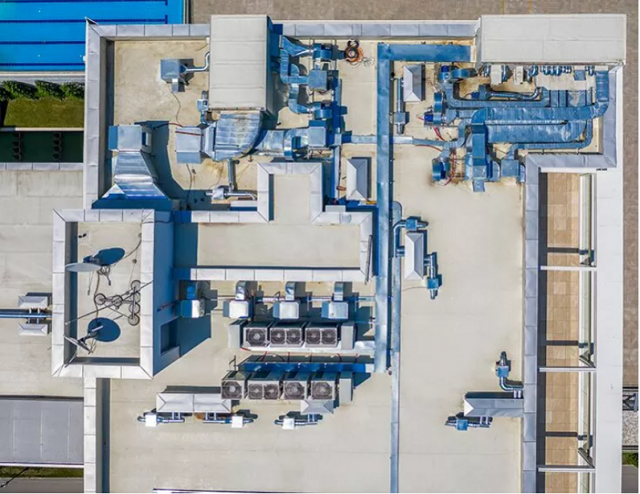Heating and ventilation are critical in both residential and commercial properties. Maintaining building occupants’ comfort and safety is a primary purpose of heating and ventilation systems (HVAC). With a well-maintained HVAC system comes the avoidance of mould, which thrives in warm, moist environments. To know more, keep reading.
Definition of HVAC
HVAC systems are an essential aspect of every structure, whether a private home, a commercial facility like a hotel or a university building, or an industrial facility like a power plant (factories, warehouses, manufacturing plants, etc.). Increasing attention has been paid to HVAC systems in light of building efficiency and environmental trends.
These systems control temperature, humidity, and air quality to provide a pleasant interior environment for both building occupants and their equipment.
Types Of Building HVAC System
Alan Baird, Owner and founder of Renown Services, one of the best air conditioning service in Melbourne advices that, “Since the location of air ducts and pipes for air should be prepared before each level obtains a ceiling, HVAC installation and air conditioning service must be selected as early as the design stage of construction”.
The designer and the project manager should meet to discuss the building’s plans and visit the site to evaluate the air conditioning.
Different models may be found on the market; however, they should all fall under one of the following categories:
● Constant Volume System
There is always a high amount. Because of its capacity to maintain a continuous flow of air, the HVAC system is often used in significant buildings. It regulates the temperature of the air. The ducts that are linked to it suck in air from the outside.
Most commercial facilities with a high volume of foot traffic, such as malls, airports, and supermarkets, use this approach.
● System for Changing the Volume
Another commercial building heating and the cooling alternative is the variable volume system. One of its primary functions is to alter the volume of air pumped into the building after it has been pre-heated or pre-cooled.
● Heat Pump/Split System Hybrid
The ducts, furnaces, and evaporator coils that make up a hybrid heat split system are the essential components. It also has a heat pump for both heating and cooling purposes. Unlike the traditional split system, a hybrid unit uses energy to start cooling or heating operations.
● Packaged Heating and Air-Conditioning Unit
As its name implies, the packaged heating and cooling system are exceedingly tiny. Small areas, such as separate office rooms, conference rooms, or even residential rooms, are ideal for this heating and cooling system.
● Split-system heating and air-conditioning
Smaller structures, such as dwellings, are the most prevalent use for this technique. A thermostat may regulate the temperature of its components, including cooling refrigerant and gas furnaces.
● Thermostats
Buildings and residences may benefit from the usage of heat pumps. As a result, they are a popular option for those who are concerned about the environment as well as their wallets. A refrigerant is used to treat the cold air, which is then pumped into the building’s interior, where it may be used to generate heat.
● Air-Conditioning System
The forced air system cools or warms the air sucked out of a building and then returned it to the building through the ducts. Fans, an air conditioner, and furnace coils are among its components.
● Multi-Zone Heating and Ventilation
It is ideal for workplaces to have a system like this one. Because it’s decentralised, you won’t have to worry about altering the temperature in other rooms when you make a change in one.
Since there are so many variances in HVAC systems, it isn’t easy to provide a recommendation. Basic knowledge of various HVAC systems will aid in making an educated selection.
Why Should Every Building Have an HVAC System?
A well-equipped and automated HVAC system is essential for any structure to work well. Adding new heating and air conditioning systems to a property may significantly impact. Let’s have a look at them:
● Reduce the cost of energy
No guarantee of efficiency, no matter how well you manage your building’s heating and cooling systems. Manual work is prone to errors. This is where automation comes in. Buildings that want to save money on energy use might benefit significantly from the latest advancements in HVAC technology.
There might be systems in your building being overused and costing you money. Your building will no longer operate properly, and it will also negatively influence the environment. Up to 99 percent of today’s furnaces are efficient. It’s capable of heating and cooling your building using every single cent of the energy it consumes. Newer air conditioners have a SEER rating of up to 26 and operate at a fraction of the expense of their predecessors.
● User-friendly controls
Please use this much-needed technology to maximize energy efficiency with the least amount of work. These days, HVAC systems are equipped with “smart thermostats,” which let you monitor and control them remotely through a digital device. In other words, you may plan, configure modes, alter and maintain temperatures, set the optimal humidity level, improve occupants’ comfort, and more.
HVAC systems are equipped with IoT sensors, making it possible to detect, diagnose, and resolve problems as they arise. You’ll be able to avoid costly equipment failures by anticipating problems early on.
● Conscious Consumption of Power
Saving energy is a shared duty, not just yours. It’s an issue of general concern that requires extra attention. For the sake of present and future generations, every unit of energy represents a depletion of a limited supply. To reduce energy consumption in buildings, it is necessary to invest in intelligent HVAC systems.
Every month, you’ll notice a significant reduction in your building’s energy use after using this technology. These HVAC systems are energy-efficient and save time, money, and construction space. It provides both heating and cooling in a single device. As it is implemented in more sophisticated buildings, the motivation to ensure energy saving becomes greater.
● Provides residents with a sense of well-being
Some still feel that improving a building’s efficiency entails sacrificing its comfort. HVAC systems built on the Internet of Things (IoT) have disproved this myth. You get both energy economy and comfort from this clever technology. This system has better humidity management and equal heat distribution. A high degree of comfort is ensured by technologies that adjust themselves to the structure’s specific needs.
● Air Flow Filtration
Dust, pollen, dander, pathogens, and chemical vapour are all found in the air of a structure. According to a slew of scientific research, indoor air pollution is more common than previously thought. Cleaner air may be yours when you install an innovative HVAC system. Air quality is always ensured using cutting-edge filtration and air purification equipment. Allergens and virus-sized particles, as well as other sorts of indoor contaminants, are effectively removed by this method.
To provide extra air, the HVAC systems contain variable speed motors that increase the static pressure in your ducts. It’s a great way to keep your air conditioner running all year long without worrying about your utility expenses going through the roof.
Final Thoughts
Mechanical breakthroughs were once the emphasis of the HVAC system. Sustainability, comfort, and energy efficiency are now more critical than they were in the past. You may save money on your utility bill by turning on your heating and cooling system only when necessary. High-tech automation is making it possible to build fully automated dwellings. When connected to smart appliances, the HVAC unit will respond to changes in the weather and user preferences.
More and more buildings are using HVAC automation systems to control temperature, humidity, and ventilation in specific areas.












































Thanks for sharing. I read many of your blog posts, cool, your blog is very good.
Thank you for your sharing. I am worried that I lack creative ideas. It is your article that makes me full of hope. Thank you. But, I have a question, can you help me?